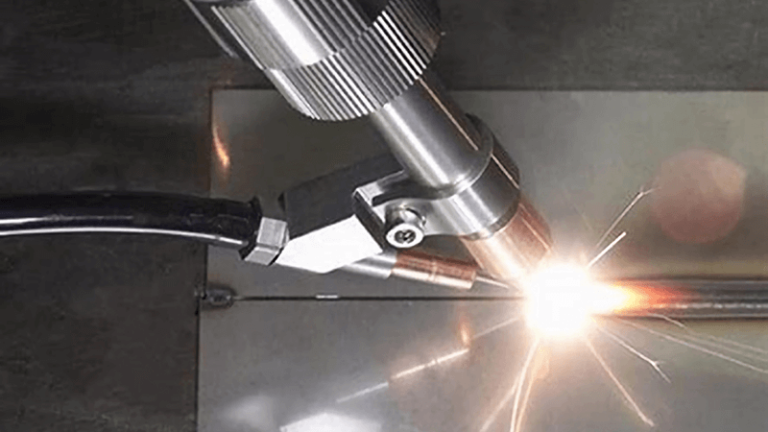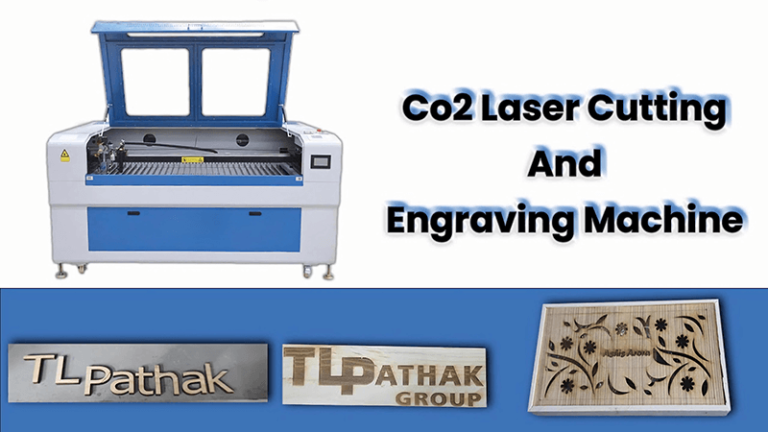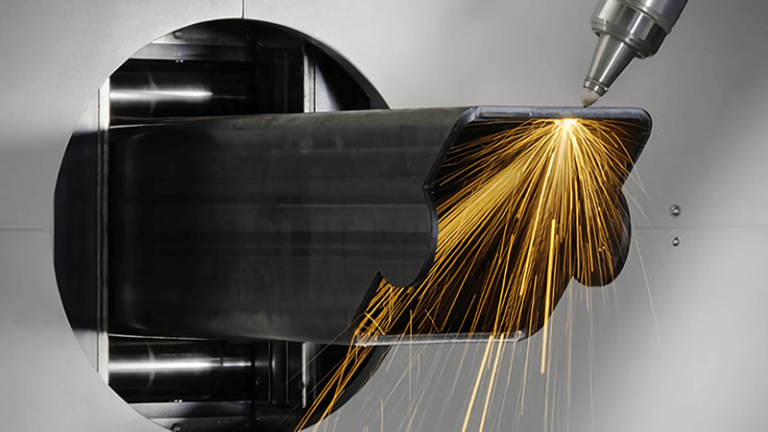Welding has long been a critical process in various industries. But let’s face it, traditional welding methods can often lead to imprecise results and weakened joints. This not only risks structural integrity but can also escalate costs due to repairs and rework. Fortunately, laser welding is revolutionizing the game, offering unmatched precision and strength.
Laser welding is a highly precise and efficient joining technique that uses a focused, high-intensity laser beam to melt and fuse metals or thermoplastics. By harnessing the concentrated energy of a laser beam, laser welding creates strong, durable joints that are ideal for applications requiring precision, strength, and efficiency. This revolutionary technology is transforming manufacturing processes across various industries, from aerospace and automotive to medical and electronics
Imagine a world where welds are flawless and durable. That’s exactly what laser technology brings to the table. By focusing energy with extreme precision, laser welding achieves high-quality joints with minimal distortion. It's time to explore how this cutting-edge technique enhances our welding capabilities.
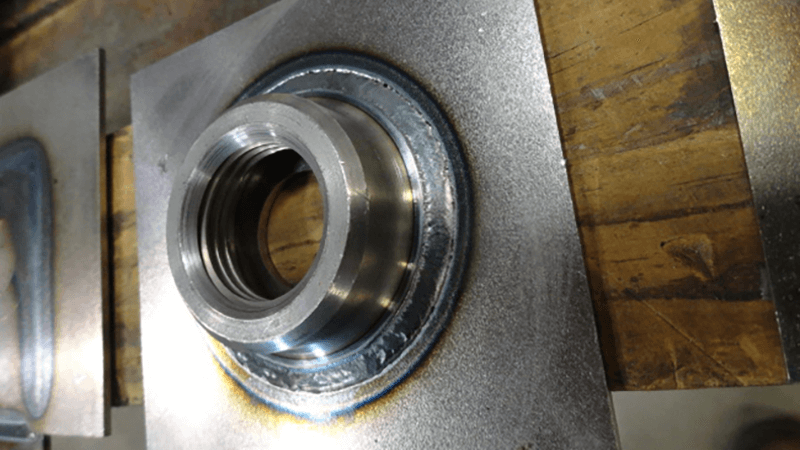
What is Laser Welding?
Laser welding is a process that uses a highly focused laser beam to melt and join materials. It’s not just about flashy technology; it's about precision and efficiency. The advantages of laser welding over traditional methods are significant. It offers faster speeds, less heat input, and the ability to weld intricate designs with ease.
But what sets laser welding apart is its ability to create deep, narrow welds that reduce the overall heat-affected zone. This results in stronger joints and less warping. The control and automation available in laser welding also mean that human error is minimized, leading to a consistent quality that’s hard to achieve with other methods.
How Laser Technology Enhances Precision
One of the standout features of laser welding is its focused energy. The laser beam can be adjusted to achieve different welding depths and speeds. This means we can tailor the process to the specific materials we’re working with.
Additionally, the minimal heat input during the welding process means that the surrounding materials experience less thermal stress. This is crucial in applications where precision is paramount. Less distortion means better fitment, leading to enhanced overall structural integrity.
So, how does this translate into real-world applications? Consider the automotive sector, where precision can impact safety and performance. Laser welding allows manufacturers to achieve tighter tolerances in their assemblies, reducing the chances of failure during operation.
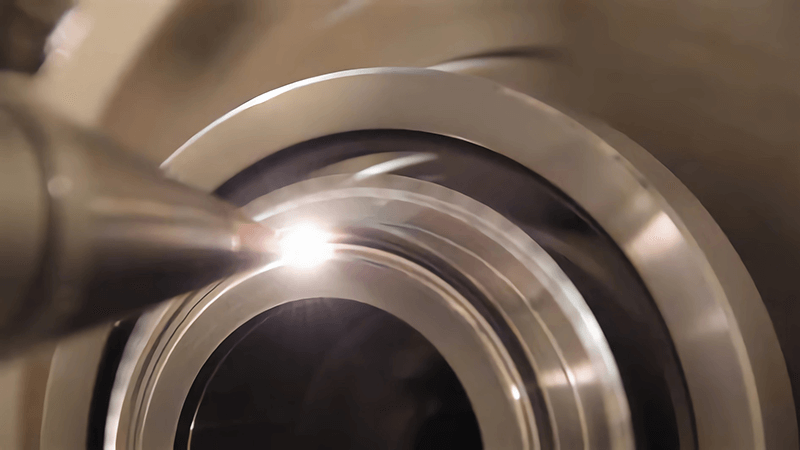
Why Is Precision Important in Laser Welding?
Precision in Laser Welding
Precision in laser welding is vital for several reasons, particularly in industries that demand high-quality and reliable joints. Here are the key factors highlighting its importance:
High Accuracy and Detail
Laser welding allows for a focused beam that creates very small spot sizes, enabling intricate welds and complex joint configurations. This level of precision is crucial for achieving exact fits and alignments. Additionally, the localized heat application minimizes the heat-affected zone (HAZ), preserving the integrity of sensitive components.
Reduced Risk of Defects
The accuracy of laser welding significantly lowers the chances of defects such as porosity, cracking, and incomplete fusion. This reliability enhances the quality of the welds and reduces the need for rework. Precision also results in cleaner welds with smoother surfaces, improving both aesthetics and structural integrity.
Material Integrity Preservation
With precise control over heat input, laser welding prevents overheating and distortion, which is essential for thin or temperature-sensitive materials. This preservation of material properties is critical in fields like aerospace and medical devices. By minimizing thermal expansion and contraction, precision helps maintain the intended shape of the workpieces, reducing post-weld distortion.
Efficiency in Production
Laser welding is fast and efficient, allowing for quick processing without compromising quality. This efficiency is especially important in high-volume production settings where time and cost savings are essential. The automation of laser welding systems ensures consistent precision across large production runs, maintaining quality standards.
Versatility Across Materials
Laser welding can join a variety of materials, including dissimilar metals, thanks to its precise control over energy input. This versatility makes it suitable for numerous applications across different industries.

The Role of Laser Welding in Strengthening Materials
Now let’s talk about strength. Laser welding isn’t just about looking good; it’s about creating robust joints that can withstand stress. High-quality welds can significantly reduce the risk of failures in critical applications.
Moreover, laser welding is versatile. It can be applied to a wide range of materials, including metals and thermoplastics. Each material behaves differently under welding conditions, but the precision of laser technology ensures that we can adapt our methods accordingly.
Take the aerospace industry, for example. Here, the strength of materials is paramount. Laser welding allows for lighter designs without compromising strength, which is essential for fuel efficiency and safety.
How does it affect structural integrity?
Laser welding plays a crucial role in the structural integrity of welded components due to its precise control over heat input and the changes it causes in the material's microstructure. Here are the key ways it impacts structural integrity:
Minimized Heat-Affected Zone (HAZ)The focused laser beam limits the heat transferred to surrounding material, reducing the size of the heat-affected zone. This preservation helps maintain the original properties and strength of the base metal near the weld, which is essential for overall structural integrity.
Reduced Residual StressWith less heat input and distortion during the welding process, laser-welded joints have lower residual stresses. This reduction enhances the durability and fatigue life of the welded structure, ultimately improving its long-term integrity.
Deeper Penetration and Narrower WeldsThe concentrated laser beam enables deeper penetration and narrower welds compared to traditional methods. This design results in a higher strength-to-width ratio, which contributes positively to the structural integrity of the joint.
Microstructural Changes and HardnessThe rapid heating and cooling in laser welding can lead to changes in the microstructure of the weld zone and HAZ. It's important to carefully control welding parameters to avoid the creation of brittle microstructures while ensuring adequate hardness and toughness.
Reduced DefectsThe precision of laser welding minimizes common defects like porosity, cracking, and incomplete fusion. Fewer defects ensure the integrity of the joint and lower the chances of premature failure.
Versatility in Material CompatibilityLaser welding can effectively join various materials, including dissimilar metals, without sacrificing structural integrity. This versatility makes it suitable for a range of applications across different industries.

Can traditional methods compete with laser welding?
Laser welding and traditional welding methods, such as MIG (Metal Inert Gas) and TIG (Tungsten Inert Gas), each come with their own strengths and weaknesses. However, laser welding often stands out with several advantages that make it an attractive choice for many applications. Here’s a closer look at how the two compare:
Advantages of Laser Welding
- Precision and Control
Laser welding offers exceptional precision by focusing a laser beam on a very small area. This allows for intricate and detailed welds while minimizing the heat-affected zone (HAZ), which helps preserve the integrity of the base materials. - Speed and Efficiency
Laser welding is significantly faster than traditional methods, achieving speeds that can exceed 100 inches per minute in automated systems. This efficiency boosts productivity, especially in high-volume manufacturing environments. - Reduced Defects
The controlled nature of laser welding lowers the likelihood of defects like porosity and cracking, resulting in cleaner welds with fewer imperfections. This quality is crucial for applications that require high standards. - Versatility
Laser welding can effectively join a wide range of materials, including dissimilar metals, with high precision. This versatility makes it ideal for complex applications in industries such as aerospace and medical devices. - Lower Heat Input
The focused energy of laser welding reduces thermal distortion and material warping, which can be significant challenges with traditional welding methods. This characteristic is particularly important when working with thin or heat-sensitive materials.
Limitations of Traditional Welding
- Slower Process
Traditional welding methods are generally slower and require skilled operators to achieve quality results. This manual nature can lead to inconsistencies and longer production times. - Greater Heat Input
Traditional methods tend to produce a larger HAZ, which can negatively affect the mechanical properties of the welded materials. This can result in issues like warping or reduced strength in the joint area. - Higher Defect Rates
The broader heat application and manual control in traditional welding can lead to higher defect rates, necessitating more rework and repairs.
Situations Where Traditional Methods Excel
Despite the benefits of laser welding, traditional methods still have their place:
- Cost Considerations: The initial investment for laser welding equipment can be high, making traditional methods more appealing for smaller operations or projects with tight budgets.
- Simplicity in Setup: Traditional welding equipment is often easier to set up and more familiar to many welders, allowing for straightforward tasks without extensive training.
- Heavy-Duty Applications: For certain heavy-duty applications involving thick materials, traditional methods may still be preferred due to their robustness.
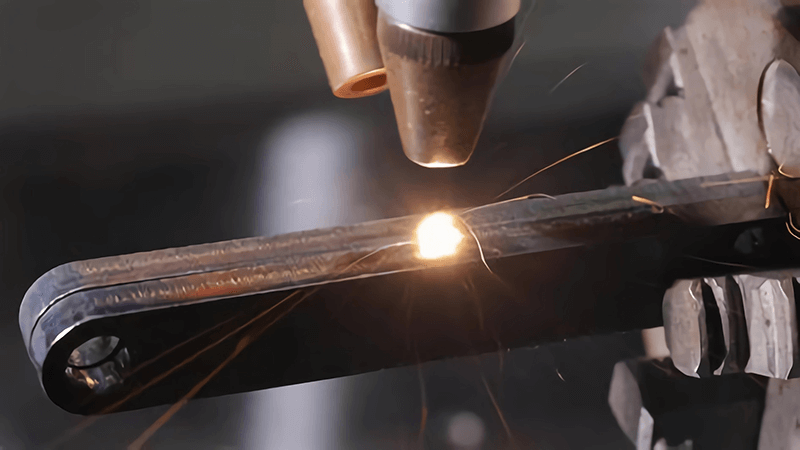
Applications of Laser Welding in Various Industries
Laser welding finds applications across various sectors, and the benefits are clear. In the automotive sector, it’s used for joining components in vehicles, where precision and strength are critical for safety.
As industries evolve, the demand for high-precision welding continues to grow. Companies that embrace laser technology will undoubtedly gain a competitive edge in the market.
Laser welding has transformed manufacturing by providing unmatched precision, speed, and efficiency across multiple sectors. Here are some key applications of laser welding in different industries:
Aerospace and Defense by Laser Welding
- Joining Turbine Engine Components: Laser welding creates strong, durable joints between turbine parts, offering advantages over traditional methods like vacuum brazing. This change leads to lower rework costs and faster production times.
- Welding Aircraft Fuselages and Frames: By improving joint strength by up to 25% compared to traditional bonding, laser welding significantly speeds up production—reducing time by around 30% for projects involving complex materials like titanium alloys.
- Welding Lightweight Materials: Laser welding effectively joins lightweight materials such as aluminum alloys and advanced composites, which are commonly used in modern aircraft and military equipment.
Automotive Manufacturing
- Welding Car Body Parts: Laser welding produces tight, strong joints that enhance the structural integrity and safety of car body parts. This method can increase production speed by up to 25% compared to traditional techniques.
- Joining Lightweight Body Panels and Frames: The precision offered by laser welding allows for effective joining of advanced high-strength steels (AHSS) and aluminum alloys used in today’s vehicles.
- Minimizing Heat-Affected Zones: Laser welding reduces heat-affected zones, preventing distortion and ensuring that components maintain their original shape and size. This accuracy is crucial for meeting strict tolerances in vehicle manufacturing.
Medical Device Production
- Manufacturing Precision Components: Laser welding is vital for producing accurate and intricate components for medical devices like pacemakers, surgical tools, and dental implants, adhering to strict safety and quality standards.
- Joining Small and Delicate Parts: The precision of laser welding enables the joining of small, intricate components in medical devices, which is essential for their proper functioning.
Other Applications by Laser Welding
- Welding Dissimilar Materials: Laser welding can effectively join a variety of materials, including dissimilar metals, making it particularly useful in aerospace and automotive sectors.
- Welding Reflective Metals: Laser systems, such as fiber lasers, excel at working with reflective metals like aluminum and copper, which can be challenging for other welding methods.
- Joining Textiles and Plastics: Beyond metals, laser welding can also join non-metallic materials, including textiles and plastics.
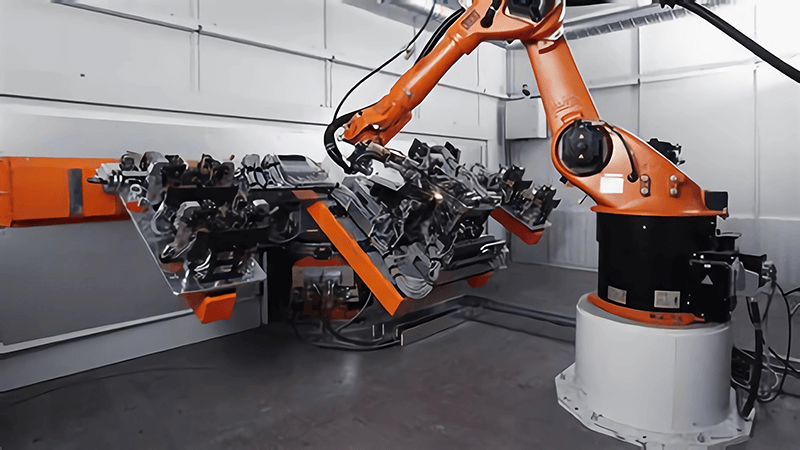
Future of Laser Welding Technology
Looking ahead, the future of laser welding technology appears bright. Innovations in laser technology are continually emerging. From increased automation to advanced laser types, the possibilities are endless.
With these advancements, we can expect even broader adoption of laser welding in various industries. The efficiency and quality it offers will likely make it the go-to choice for manufacturers looking to optimize their processes.
Conclusion
In summary, laser welding enhances precision and strength like never before. By minimizing distortion and maximizing joint quality, it sets a new standard for welding practices. If you’re in the market for laser welding solutions, it’s time to consider the advantages this technology can bring to your operations. Come to contact us if you have technique problem.
References:
1>. " Top Benefits of Using Laser Machine Welding", from Kirin Laser.
2>. " Top 10 Laser Welding Machine Companies in the EU",from Kirin Laser.
3>. " The Benefits of Using Laser Rust Cleaning Machines: A Game-Changer?", from Kirin Laser.
4>. "Top 10 Laser Welding Machine Companies in the USA", from Kirin Laser.
5>. "Unveiling the Power of Laser Welding Machines: Revolutionize Your Welding Experience", from Goldsupplier.


